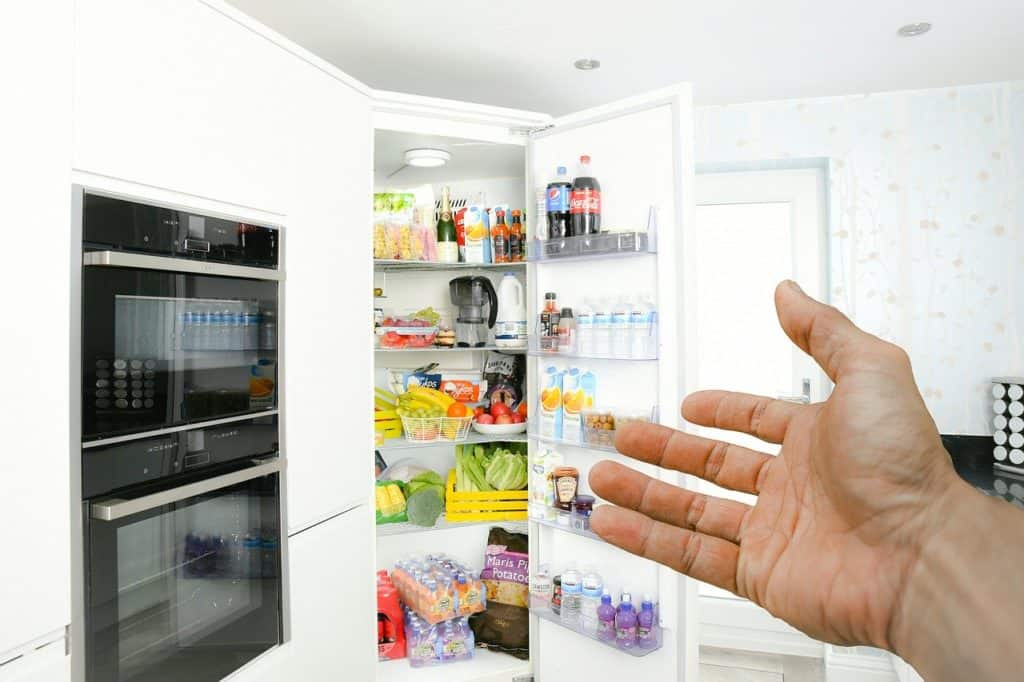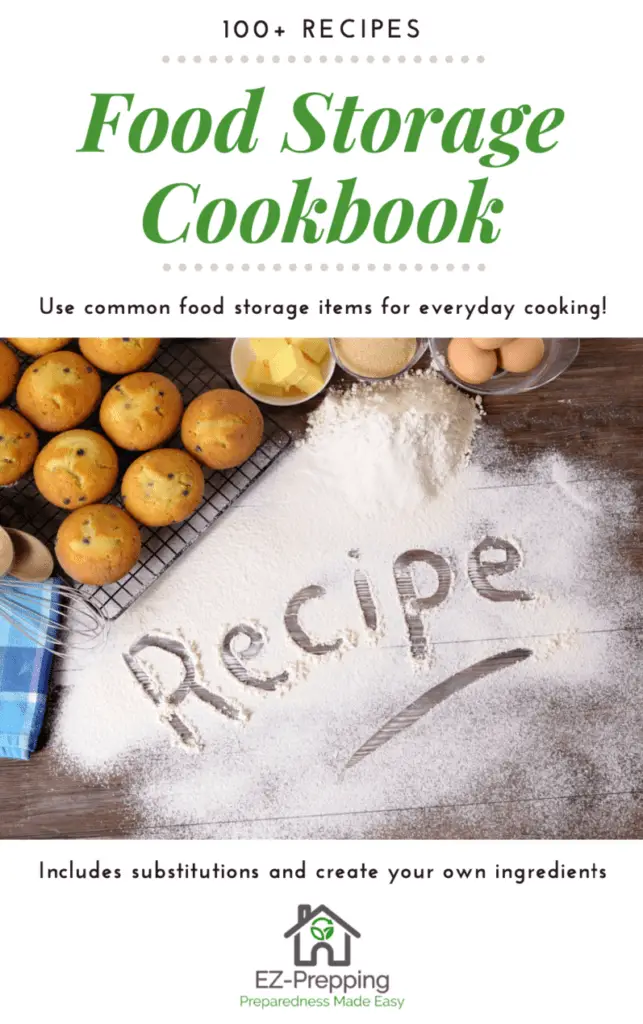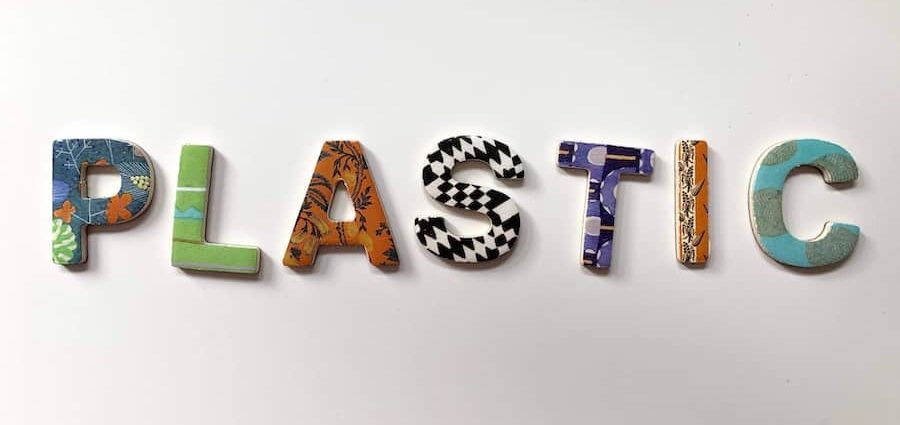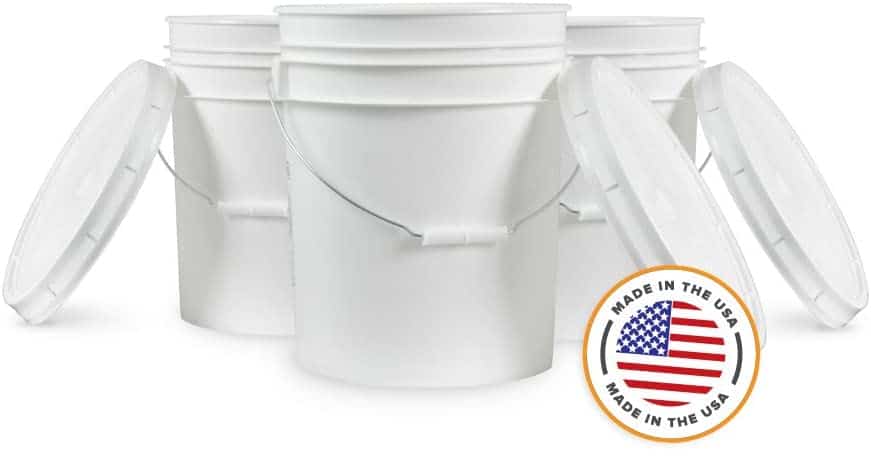Keeping food and water free from harmful chemicals and toxins that can be released by certain types of plastics is often overlooked but extremely important to consider. Some plastic containers are more safe for food and water storage while other plastic containers are more harmful for our personal and environmental health. So which plastics are safe for food storage?
Which plastics are safe for food storage?
Plastics that are safe to use as food storage containers include:
- Plastic #1: PET or PETE – (Polyethylene Terephthalate)
- Plastic #2: HDPE – (High Density Polyethylene)
- Plastic #4: LDPE (Low Density Polyethylene)
- Plastic #5: PP – (Polypropylene)

What plastics should you avoid?
Plastics that you should avoid using as food storage containers include:
- Plastic #3: PVC – (Polyvinyl Chloride)
- Plastic #6: PS — (Polystyrene)
Other
Plastic #7: Other – (can contain various plastics, such as Bisphenol A (BPA) )

*Numbers 1 – 7 are used to refer to the different types of plastics inside the recycling triangle diagram.
| Safe | Avoid | What and Why |
|---|---|---|
| Plastic #1 | PET or PETE – (Polyethylene Terephthalate) – clear, strong and lightweight plastic that makes it a good option for storing water and food even for the long term. | |
| Plastic #2 | HDPE (High-Density Polyethylene) – impact-resistant, long-lasting, and weather resistant. Work well as water containers for things like washing your dishes or cleaning your clothes, not for drinking unless you can clean them thoroughly. There are several durable food-grade buckets that are made from HDPE that work great for storing food for the long-term. See options on Amazon! | |
| Plastic #3 | PVC – (Polyvinyl Chloride) – rigid or flexible, in items like bibs, teething rings, and sandwich bags. It contains numerous toxic chemicals including lead and phthalates. | |
| Plastic #4 | LDPE (Low-Density Polyethylene) – considered less toxic than other plastics and safe for use. | |
| Plastic #5 | Plastic #5: PP – (Polypropylene) – tough, lightweight, and has a high heat resistance so it is unlikely to leach chemicals as many other plastics do. Check out our article The Best Airtight Pantry Food Storage Containers? | |
| Plastic #6 | Plastic #6: PS — (Polystyrene) – rigid, in items like egg cartons, Styrofoam cups, and plasticware. Can leach styrene, a known neurotoxin along with other harmful health effects. | |
| Plastic #7 | Plastic #7 | Plastic #7: – Plastic #7 is the recycling code for plastics that can contain BPA and although some #7 plastics don’t, it is a good idea to avoided using it to store food if possible. |
The below YouTube video is of Patty Kim from National Geographic’s The Green Guide. She shares tips for which plastics to use and which to avoid.

How to Use Your Food Storage
See exactly what to buy and how to use your food storage in recipes that everyone in your family will enjoy so that nothing goes to waste. Plus long-term food storage substitutions and how to make your own ingredients!
What plastics are BPA free?
- Plastic #1: PET or PETE – (Polyethylene Terephthalate)
- Plastic #2: HDPE – (High Density Polyethylene)
- Plastic #4: LDPE (Low Density Polyethylene)
- Plastic #5: PP – (Polypropylene)
Plastics that contain BPA
Plastic #7 is the recycling code for plastics that can contain BPA and should be avoided if possible. Although plastics #3 (Polyvinyl Chloride) and #6 (Polystyrene) technically do not contain BPA, the chemicals that are used to manufacture these products also pose serious risks to our health.
What is BPA (Bisphenol A)?
BPA stands for bisphenol A. It is an industrial chemical that has been used to make certain plastics and resins since the 1960s. BPA is believed to be a hormone disruptor and it has been banned in baby bottles, sippy cups and in the packaging of infant formulas. However, its use in other food and beverage containers continues to be monitored and is currently considered safe by the U.S. Food and Drug Administration. Canada has actually labeled BPA as toxic and like the U.S. has banned it from use in baby products.
There are many options of BPA-free plastic food and beverage containers available today, allowing all of us the option of minimizing our exposure to it.
Which Plastics are FDA Approved, Food Grade Plastic?

Plastic #1: PET or PETE – (Polyethylene Terephthalate)
PET is commonly used for beverages and a few food items including:
- Soft drinks
- Juices
- Bottled water
- Peanut butter
- Pickles
- Salad dressing
PET is the easiest plastic to recycle. It is a clear, strong and lightweight plastic that makes it a good option for storing water and food even for the long term.
This type of container has good oxygen barrier qualities and can be used with oxygen absorbers to store bulk dry foods. The low oxygen content of the sealed containers protects the stored food from insect infestation and helps preserve product quality. These containers are well suited for products that are rotated on a regular basis, while still providing many years of storage capability. Use only PETE bottles that have been previously commercially packaged with food. Bottles need to have screw-on lids with plastic, not paper or foam, lid seals. Verify that the lid seal will not leak air by placing a sealed empty bottle under water and pressing on it. Wash and rinse bottles to remove any residue. Drain and dry bottles. Place an oxygen absorber packet into each bottle. Fill bottles with bulk dry products that are low in moisture and oil content. Wipe top sealing edge clean. Screw lids on tightly. Tape the lid edge to prevent loosening.
However, I would recommend not using it to store food or water in high heat environments.
Is number 1 (PET) plastic food safe? Yes, it is safe to use as food and water storage containers but avoid using it in high heat environments.
FDA Approved for food contact? Yes!
Plastic #2: HDPE (High-Density Polyethylene)
HDPE is commonly used for items such as:
- Milk containers
- Food Storage Buckets/Containers
- Haircare products
- Motor oil
Like PET, HDPE is also a very easily recycled plastic. High-Density Polyethylene is very strong. That is why a plastic jug that weighs 2 ounces can carry a gallon of milk. It is impact-resistant, long-lasting, and weather resistant.
There are several durable food-grade buckets that are made from HDPE (High-Density Polyethylene) that work great for storing food for the long-term.

5 Gallon Bucket & Lid
Here is a durable food-grade bucket that we really like. Very sturdy. Once sealed, they are absolutely air tight. I use them for long term storage of rice, beans, flour, and more.
Important note, be cautious because used milk jugs aren’t good water storage containers unless they are properly cleaned which is difficult to do. Even though milk containers are considered food grade by the FDA, they are difficult to properly clean. Chlorine bleach containers hold up better, but if water is stored in these containers, it should be used for things like washing your dishes or cleaning your clothes, not for drinking.
FDA Approved for food contact? Yes!
Plastic #4: LDPE (Low Density Polyethylene)
LDPE is most commonly used for items such as:
- Dry-cleaning bags
- Bread
- Frozen food bags
- Squeezable bottles for mustard and honey
LDPE is considered less toxic than other plastics and relatively safe for use.
Products made using LDPE plastic are reusable, but not always recyclable. You will need to check with your local collection service to see if they are accepting LDPE plastic items for recycling.
Considering the type of containers that LDPE plastics are used in it might be difficult and impractical to sanitize and reuse it for long term food storage.
FDA Approved for food contact? Yes

Plastic #5: PP (Polypropylene)
It is most commonly used for items such as:
- Yogurt containers
- Margarine tubs
- Deli meat containers
- Medicine bottles
- Disposable diapers
- Pails
- Plastic bottle tops
- Potato chip bags
- Straws
- Packing tape
- Rope.
Polypropylene (PP) plastic is tough and lightweight, and yet may still be flexible. PP has a high heat resistance so it is unlikely to leach chemicals like many other plastics do. It serves as a barrier against moisture, grease and chemicals. The thin plastic liner in a cereal box is polypropylene. This keeps your cereal dry and fresh.
Is #5 plastic safe for food storage? Yes, plastic # 5 (PP) is a widely used plastic that will hold up well in hot environments and can work well as food storage containers.
FDA Approved for food contact? Yes
*FDA compliant means that a material meets all of the FDA’s guidelines for safe, direct contact with food. It’s essentially an official way of saying a material is food grade.
How to use plastic containers for storing food?
Know the Plastic’s Code (1-7)
On the bottom of plastic containers you will find a small triangle with a number in it ranging between 1 and 7. As talked about above the recommended plastics numbers are 1, 2, 4, and 5. The numbers that you might want to consider avoiding for food use are 3, 6, and 7.
Which plastic numbers are safe for Food?
Food Safe Plastic numbers – 1, 2, 4, 5
Which plastic numbers are NOT safe for food?
Plastic numbers you should avoid – 3, 6, and usually 7
Keep Plastic Containers Cool.
After meals, we toss our leftovers in a plastic tupperware and set it in the fridge. Then when it comes time to eat the leftover food it is easy to simply microwave it while still in the plastic container. We all do this and of course, I’m guilty of it too. However, we should try to avoid microwaving foods in most plastic food containers (there may be some exceptions). Plastic containers from packaged microwavable meals shouldn’t be reused after their initial use; they’re safely designed for one-time-use only. Putting plastic containers in the dishwasher should also be avoided for most plastic containers.
For help with planning your food storage see our Food Storage Calculator!
Conclusion
I don’t know about you but we have a cupboard full of plastic containers that we put leftovers in almost every day without even thinking about it. I doubt that many of us will fully stop using plastic containers to store our food so being aware of plastics that are safe to use as food storage containers is crucial. Be cautious and smart about which plastics you use to store food and use glass or other types of containers when possible.
For more information visit the FDA’s website.

